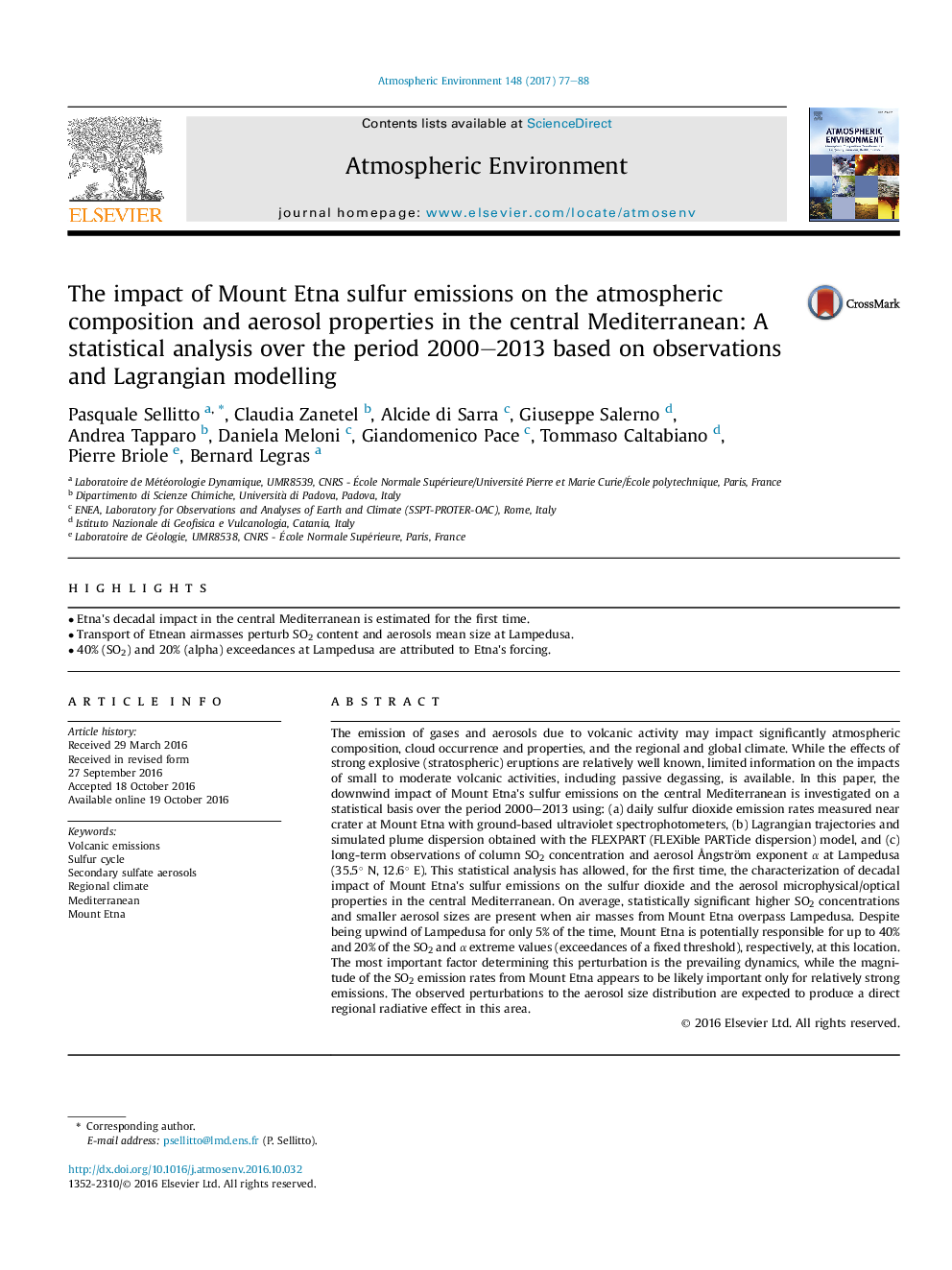| کد مقاله | کد نشریه | سال انتشار | مقاله انگلیسی | نسخه تمام متن |
|---|---|---|---|---|
| 5753496 | 1620326 | 2017 | 12 صفحه PDF | دانلود رایگان |
عنوان انگلیسی مقاله ISI
The impact of Mount Etna sulfur emissions on the atmospheric composition and aerosol properties in the central Mediterranean: A statistical analysis over the period 2000-2013 based on observations and Lagrangian modelling
ترجمه فارسی عنوان
تأثیر انتشار کربن اتنا کربن اتم بر ترکیب جوی و خواص آئروسل در مدیترانه مرکزی: یک تحلیل آماری در طول دوره 2000 تا 2013 بر اساس مشاهدات و مدل سازی لاگرانژی
دانلود مقاله + سفارش ترجمه
دانلود مقاله ISI انگلیسی
رایگان برای ایرانیان
کلمات کلیدی
انتشارات آتشفشانی، چرخه گوگرد، اسپری های سولفات ثانویه، آب و هوا منطقه ای، مدیترانه، کوه اتنا،
موضوعات مرتبط
مهندسی و علوم پایه
علوم زمین و سیارات
علم هواشناسی
چکیده انگلیسی
The emission of gases and aerosols due to volcanic activity may impact significantly atmospheric composition, cloud occurrence and properties, and the regional and global climate. While the effects of strong explosive (stratospheric) eruptions are relatively well known, limited information on the impacts of small to moderate volcanic activities, including passive degassing, is available. In this paper, the downwind impact of Mount Etna's sulfur emissions on the central Mediterranean is investigated on a statistical basis over the period 2000-2013 using: (a) daily sulfur dioxide emission rates measured near crater at Mount Etna with ground-based ultraviolet spectrophotometers, (b) Lagrangian trajectories and simulated plume dispersion obtained with the FLEXPART (FLEXible PARTicle dispersion) model, and (c) long-term observations of column SO2 concentration and aerosol Ã
ngström exponent α at Lampedusa (35.5° N, 12.6° E). This statistical analysis has allowed, for the first time, the characterization of decadal impact of Mount Etna's sulfur emissions on the sulfur dioxide and the aerosol microphysical/optical properties in the central Mediterranean. On average, statistically significant higher SO2 concentrations and smaller aerosol sizes are present when air masses from Mount Etna overpass Lampedusa. Despite being upwind of Lampedusa for only 5% of the time, Mount Etna is potentially responsible for up to 40% and 20% of the SO2 and α extreme values (exceedances of a fixed threshold), respectively, at this location. The most important factor determining this perturbation is the prevailing dynamics, while the magnitude of the SO2 emission rates from Mount Etna appears to be likely important only for relatively strong emissions. The observed perturbations to the aerosol size distribution are expected to produce a direct regional radiative effect in this area.
ناشر
Database: Elsevier - ScienceDirect (ساینس دایرکت)
Journal: Atmospheric Environment - Volume 148, January 2017, Pages 77-88
Journal: Atmospheric Environment - Volume 148, January 2017, Pages 77-88
نویسندگان
Pasquale Sellitto, Claudia Zanetel, Alcide di Sarra, Giuseppe Salerno, Andrea Tapparo, Daniela Meloni, Giandomenico Pace, Tommaso Caltabiano, Pierre Briole, Bernard Legras,
